Chinese chain pharmacies face many variables. Almost every forward-thinking company is pre-judged based on its own experience and laid out in advance.
If history can really see the future, then, unfortunately, the history of chain pharmacies in China is too short, but the future is too long, powerless, and limited reference value.
Above the format of chain pharmacies, the United States has a very long history, and experience may be more worth learning. Because it is not like the innovative pharmaceutical industry, its technical attributes are strong, and there are obvious technical differences. As a comprehensive format of retail + services, Sino-US chain pharmacies have a similar environment, so the development history of American chain pharmacies is worth studying. The experience may give some directional guidance.
For this reason, the arterial network analyzes the development history of the US chain pharmacy industry and compares it with the current status of the domestic pharmaceutical retail industry in order to provide some directional insights.
In this article you will see:
An overview of the US pharmaceutical market;
The development of the US chain pharmacy industry;
Analysis of factors affecting the development of the US chain pharmacy industry;
Excellent enterprises and models in the US chain pharmacy industry;
Opportunities facing the Chinese chain pharmacy industry;
The American model's enlightenment to China;
Focus on "spoiler" in advance: At the end of the article, we will list 7 major variables as a pre-judgment for the future development trend of the pharmaceutical retail industry.
The US pharmaceutical market is over 3 trillion yuan, the world's largest "medicine jar"
In terms of scale, the United States is the world's largest pharmaceutical market, with a drug expenditure of $450 billion in 2016. In the same year, the global drug expenditure was 1.1 trillion US dollars. That is to say, Americans “eat†40% of the world's drugs, which is a well-deserved “medicine jarâ€. IMS predicts that US drug spending will reach $560-590 billion in 2020, an increase of 34% from 2015.
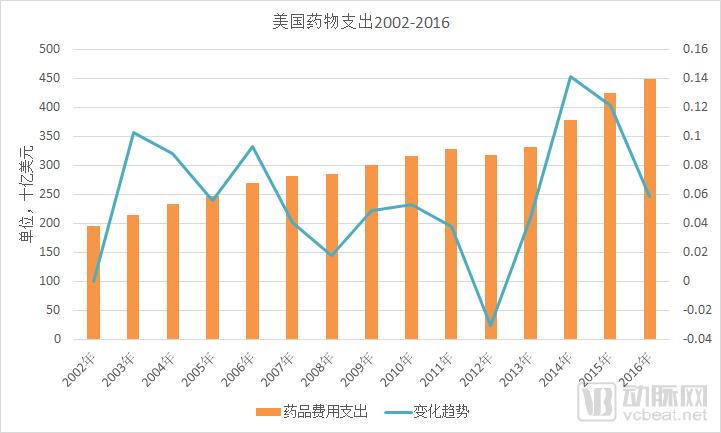
Source: IMS, Statista, Arterial Network
From the perspective of product structure, the US pharmaceutical market is dominated by patented drugs, supplemented by generic drugs. Although generics account for more than 80% of prescriptions, they only account for about 12%. This is related to the fact that there are many new drugs in the United States, and the approval time is short. The new drugs can be quickly used by patients after they are marketed.
The United States implements a strict "separation of medicines" system, coupled with perfect prescription management, the structure of drug circulation terminals is very different from that of China. According to the sales scale, the size of the domestic and overseas channels of the US pharmaceutical market is about 3:7. The main out-of-hospital channels include retail chain pharmacies, single pharmacies, PBM mail order, and Shangchao pharmacy.
Division of labor in the US pharmaceutical market
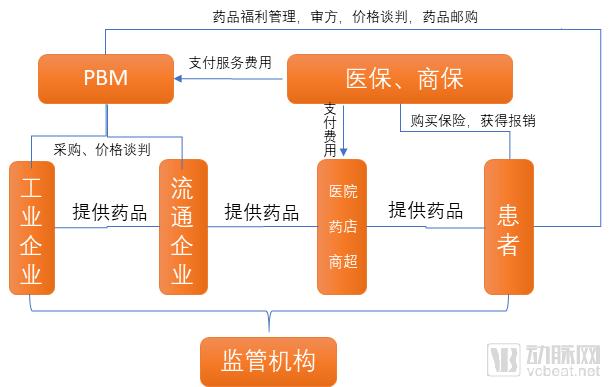
From the diversification of diversity to the concentration of professional, the history of the development of American chain pharmacies
After Columbus started his American adventure in the late 15th century, the ancient science of pharmacy landed on the American continent with the colonists. At that time, the treatment was more based on medicinal plants, including the scutellaria of Florida and the cinchona bark of Peru, which became an effective method for treating malaria.
The history of US drug retail originated in the second half of the 18th century, and the first “pharmacies†in North America appeared in New York, Philadelphia, and Boston. These “pharmacies†sell spices, cosmetics, daily necessities, etc. Pharmacists have “exclusive†formulas and provide medical and pharmaceutical services based on their own experience. The two are often inseparable and lack systematic standards.
In the 19th century, the United States quickly emerged as an industrial country, and the chemical industry was highly developed, providing a basis for the development of the pharmaceutical industry. Tablets, enteric pills, and capsules replaced the manual formulas of past pharmacists. It is also in this environment that the functions of doctors and pharmacists are separated, and medicines become a standardized product, which has led to the emergence of pharmacies in the modern sense.
Throughout the 20th century, it was the process of “standardization†of the retail pharmacy industry in the United States. The chained and standardized pharmacies appeared, and the retail pharmacy network covered the whole country. By the end of the 20th century, the oligopoly situation had emerged and the chain rate had increased. At the same time, with the rise of the drug price control bill, the rise of generic drugs, the demand for commercial insurance control fees, the organization of drug welfare management, and professional pharmacies, the pharmaceutical retail industry began to move toward centralized and professional development.
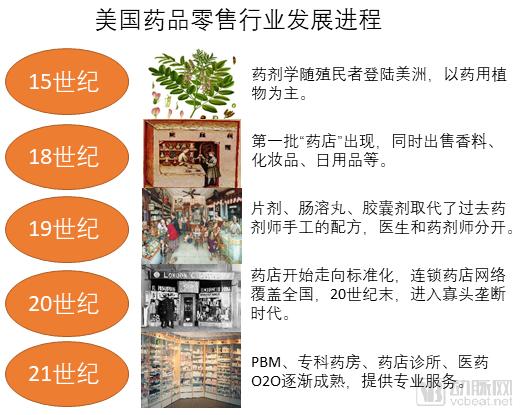
The provision of medical and pharmaceutical services in retail pharmacies is a major feature of the United States. Large chain pharmacies such as Walgreens and CVS provide basic medical services in pharmacies. They are also PBM (Pharmaceutical Welfare Management) service providers, working with medical insurance companies to provide prescription review, drug benefit plans, procurement negotiations, patient management, etc. Pharmaceutical services are important.
At present, the main roles of US pharmaceutical retail include chain pharmacies, single pharmacies, specialist pharmacies, PBM mail order, business super pharmacies, etc. Several different types of terminals provide different products and services.
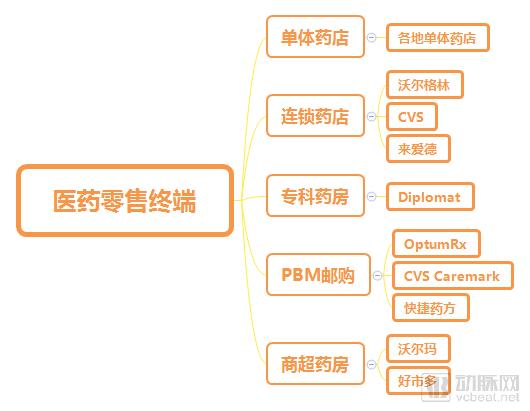
From the market share, the chain pharmacy market accounted for more than 40%, the proportion of single pharmacy market gradually decreased, the market share dropped to about 15%, PBM mail order accounted for 25%, Shangchao and professional pharmacies accounted for 20%.
Four major driving factors drive pharmacies to specialize and serve
From the influencing factors of the development of the US pharmaceutical retail industry, there are four main driving factors: demographic structure change, medical insurance coverage rate, new drug listing speed, and increased demand for control fees.
First, the aging of the population has brought chronic diseases and long-term medication needs. According to the results of the US Census, as the “baby boomer†generation grows older, it is expected that by 2020, the population over 55 will increase by 67% from 2000, while the total population will increase by only 19%. The average prescription for an aging population is more than five times that of young and middle-aged people, which will bring a large amount of drug consumption demand.
Second, the United States passed the Affordable Care Act (ACA) in 2010, adding more than 30 million people to health care. The increase in medical coverage has increased the demand for drugs, which will bring about a $20-30 billion increase in the pharmaceutical market.
At the same time, new drugs and innovative therapies are on the market, providing opportunities for the professional development of pharmaceutical retail. More and more pharmaceutical companies choose to provide professional drugs and pharmacy services to patients through retail pharmacies rather than medical institutions. Professional pharmacies (DTP pharmacies) have become the fastest growing unit in the pharmaceutical retail market.
The demand for medical insurance control fees has pushed retail pharmacies to lower drug prices through group procurement and price negotiation. The scale has become an important bargaining power, which has further promoted the scale and intensification of retail pharmacies.
PBM organization and pharmacy + clinic model are increasingly becoming the new favorite of the market. The former business used the prescription review, price negotiation, patient management, and differential payment ratio to control the insurance institutions. However, in the process of development, it gradually penetrated into the pharmaceutical retail field, providing long-term prescription and chronic disease drugs through mail order. A force that cannot be ignored in pharmaceutical retailing.
The pharmacy + clinic model is called a pharmacy or retail clinic. It refers to a junior clinic set up in a pharmacy. It is provided by a licensed nurse and a licensed pharmacist (with prescription rights), can handle common diseases, and has low prices. Advantages (30% lower than community clinics and 80% lower than hospital emergency). For this reason, its acceptance is very high, and it is quickly pushed open in retail pharmacies, and patient satisfaction is also high.
The two most well-known companies in the US retail pharmacy industry are Walgreens and CVS Health. The two companies have been chasing after you in the past few decades, and have always occupied the top two in the US pharmaceutical retail industry. However, the development of the two has similarities and differences.
Walgreens
Walgreens Boots Alliance (Wolbolian) was merged in 2014 by Walgreens, the largest chain of pharmacies in the United States, and Bosch, the UK drug retailer and distributor. Both companies have a hundred years of history, Walgreen was founded in 1901, and Union Boots was founded in 1834.
Headquartered in Delaware, USA, Wobo is operating in 251 countries and regions around the world. Its business segments include Walgreens chain pharmacies, Duane Reade, and Alliance Healthcare. , health and daily brands No7, Soap & Glory, Liz Earle, Sleek MakeUP and Botanics.
Wobo United's health and daily brand
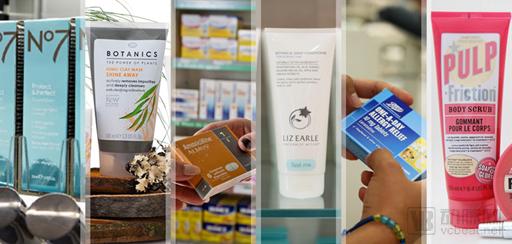
Image source: walgreensbootsalliance official website
As of FY2017 (August 31, 2017), Wobble has more than 13,200 pharmacies in 111 countries and territories (8,100 in the US, and approximately 76% of the US population lives in Walgreens or Duane Reade retail) Within 5 miles of the pharmacy; 3,901 distribution centers provide medicines for pharmacies, doctors, health centers and hospitals with up to 230,000; the number of employees is 385,000, and the revenue for fiscal 2017 is $118.2 billion.
"Focus on pharmacies, diversified operations" can sum up the success of Wobo. The pharmacy is the core business of Wobolian. Whether it is the Walgreens before the merger or the United Bozi, they are mainly pharmacies. However, the United States and the United Kingdom drug market are slightly different - the United States medicine is separated, the pharmacy is more specialized; the United Kingdom implements universal health insurance, the NHS uniformly purchases prescription drugs and controls the price, and the pharmacy mainly operates general medicine, health and daily chemical products.
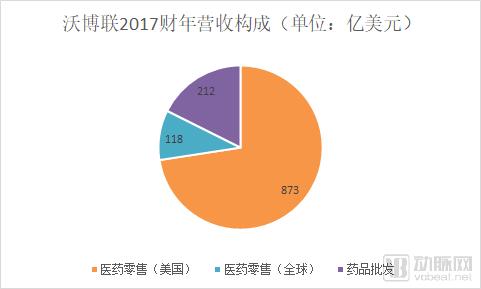
Source: Wobo United FY2017 Annual Report, Arterial Network Mapping
Around the pharmacy, Walgreens has tried a variety of innovative services such as “pharmacy + clinicâ€, pharmaceutical welfare management, and O2O. In the United States, there are about 400 “pharmacies + clinics†(mainly Walgreens pharmacies) in the United States, which provide services to customers through professional medical pharmacists (pharmacists, doctors, nurse practitioners, etc.) of their own or cooperative medical organizations; Wobo.com also has access to online and offline channels through APP, membership programs, etc. Its Balance® Reward members plan to earn points through walking, weighting, health management, etc., which is the originator of incentive schemes such as “step by stepâ€.
In recent years, WobboLink has continued to conduct global M&A integration and invest in pharmaceutical distribution and retail companies in the UK, France, Germany, the US and China. For example, in 2008, Guangzhou Pharmaceutical was established as a joint venture with Guangzhou Pharmaceutical Group (Guangzhou Pharmaceutical Group repurchased shares in December 2017); on November 30, 2017, Sinopharm Holding National Pharmacy decided to introduce Wobolian as a strategic investor. The integration of resources has become an important path for Wobolian's global expansion.
CVS Health
CVS was born in the 1960s. Its initial business was not for retailing pharmaceuticals. After two or three years of running health products, it gradually shifted its focus to pharmaceutical retail. By 1970, CVS had opened 100 stores in New England and the Northeast, and by 1985, CVS had exceeded $1 billion in annual sales.
While expanding the scale of the acquisition, CVS also focused on horizontal mergers and acquisitions, expanding its business scope: In 2006, CVS acquired the “minute clinic†and began to establish a new business model including small clinics in pharmacies. In 2007, CVS merged with PBM Caremark. Power PBM business. In 2015, CVS acquired the US retail pharmacy Target, which acquired more than 1,600 pharmacies and 80 clinics, and became the second largest pharmaceutical retailer and pharmacy service provider in the United States.
CVS's recent acquisition has set a record for the US pharmaceutical retail industry mergers and acquisitions. CVS announced in December 2017 that it will acquire health insurance company Aetna for $69 billion. The deal is the largest deal in the history of the US pharmaceutical retail industry and the largest deal in the global pharmaceutical industry in 2017. Aetna is a leading US commercial insurance company that provides insurance, life insurance, health insurance and other insurance services to governments, businesses and individuals. It has more than 23 million members in the health insurance sector and 2016 health insurance premium income is $13.469 billion. In March 2018, the transaction was approved by the board of directors of Antai.
CVS revenue comes from two core businesses: retail pharmacies and pharmaceutical services. Among them, pharmacy services refer to a full range of PBM services, including pharmacy mail order services provided by CVS Caremark, specialist pharmacies and infusion services, health management plans, prescription management, and claims processing. The clients of this business are mainly employees, insurance companies, trade unions, government employee organizations, health plans, managed Medicaid programs, and other health benefit program sponsors or individuals.
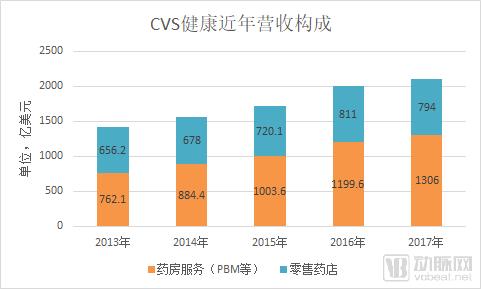
Source: CVS Annual Report, Arterial Network Mapping
CVS said in its annual report that since 2014, the compound annual growth rate (CAGR) of PBM revenue has reached 13.9%, and the compound annual growth rate of operating profit is 10.6%. PBM net income is expected to climb to approximately $134 billion in 2018, while the division's operating profit will be close to $5 billion.
The core of CVS growth is the “two-wheel drive†of PBM business + pharmaceutical retail business. Under the US commercial insurance and self-funded drug expenditure environment, this has excellent advantages and can fully satisfy the payment side to control the drug cost and obtain Demand for medicine supply. After the merger with professional health insurance company Antai, CVS's business model will become "health insurance + PBM + pharmaceutical retail", synergy is stronger, and more able to anchor customers. The biggest revelation of CVS is horizontal development, not just the pharmaceutical retail business.
Taking the United States as a guide, where is the domestic pharmaceutical retail market going?
Although both Wobolian and CVS Health are companies that focus on pharmaceutical retailing, the development path and business landscape of the two are very different. The most intuitive point is that Wobble's business is deeper, and CVS's diversification strategy gives it a competitive edge beyond retail.
There is no good or bad business model, which is most important for business development. For domestic pharmaceutical retailers in the midst of rapid changes, choosing the Wobolian model or the CVS model may determine their future destiny.
Wobolian, CVS health comparison
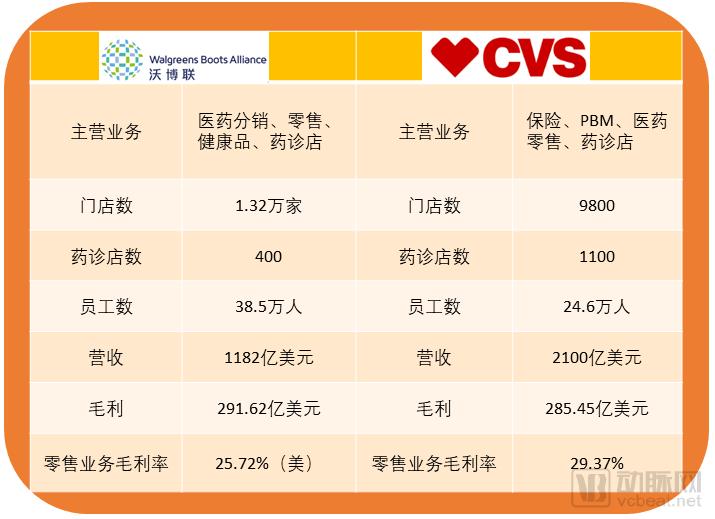
Source: Wobolian, CVS Health Annual Report, Arterial Network
From the perspective of influencing factors, the domestic pharmaceutical retail industry has something in common with the United States, and there are also differences. Commonalities are changes in demographic structure, accelerated separation of medicines, increase in supply of medicines, and increased demand for payment of party fees. The differences are in market concentration, informatization level, and ability to pay for commercial insurance. However, there is a high probability that the future domestic pharmaceutical retail business will move toward the US model, or at least a "deformation" of the American model.
In this process, domestic pharmaceutical retail enterprises have mainly done two things, one is the large-scale mergers and acquisitions integration, one thing is to improve the pharmacy and medical service capabilities.
From the perspective of mergers and acquisitions, capital participation is the main performance. In recent years, professional investment institutions such as GF-Shunde and Gaochun Capital, and industrial enterprises such as Guangyao Baiyunshan, Tasly Group and Buchang Pharmaceutical have participated in the pharmaceutical retail industry's investment mergers and acquisitions, and the listing of pharmaceutical retail enterprises has increased the merger of small chain pharmacies. The "enclosure movement" of the pharmaceutical retail industry has been vigorously carried out. The addition of Internet + pharmaceutical companies such as Ali Health has brought more checks and balances to the industry.
The chain rate is an important measure. Under the merger of large-scale mergers and acquisitions, the chain rate of the pharmaceutical retail industry has increased rapidly, and the market share of the head enterprises has increased even faster. It is expected that the integration of M&A in the chain pharmacy industry will continue in the future until the M&A cost exceeds the market's expectations for the future. In addition, considering the regional differences in the domestic retail pharmacy industry, the nationwide pharmacy network of Wobo and CVS is likely to not appear, but form a regional leader.
Opportunities for separate medicines and prescription outflows are seen as important growth opportunities for the retail pharmacy industry in the future. At present, there are also companies such as Baiyangyi, WeChat, Ali Health, Jiuzhoutong, and Keystone. These policies are also supported in Xi'an, Chengdu, Chongqing, Tianjin, etc., but national, large-scale hospital prescriptions. The out-of-hospital circulation has not yet taken shape.
There are three main factors that restrict the circulation of prescriptions: prescription source, medical insurance support, drug supply guarantee and pharmacy service capacity, involving hospitals, doctors' interests and income structure adjustment, difficulty in medical insurance control fees, and lack of service capacity of chain pharmacies.
From the US experience, the e-prescription sharing platform model is feasible: According to Medscape, e-prescribing accounts for 77% of all prescriptions in the United States. Doctors obtain prescription qualifications from regulatory authorities, and supervise doctor prescriptions through doctor identification numbers and electronic signatures. Behavior, avoiding the abuse of prescription drugs, electronic prescriptions can be easily docked between doctors' clinics and retail pharmacies to facilitate patients' withdrawal and renewal. From the perspective of technology implementation, the electronic prescription sharing platform is not complicated. With the introduction of regulatory rules, or can be implemented in China, this will benefit the development of the pharmaceutical retail industry.
Combined with the experience of the United States, there are several pre-judgments for the future development of China's pharmaceutical retail industry:
1. The separation of medicines will continue to be implemented, and the size of retail pharmacies will exceed the size of hospitals;
2. The prescription sharing platform will become an important hub connecting hospitals and pharmacies, and electronic prescription applications will become the norm;
3. M&A integration will increase industry concentration, and the future industry pattern may be several national leaders + several regional leaders;
4. DTP pharmacies and professional pharmacies have developed rapidly and become important formats independent of general chain pharmacies;
5. Drug supply support capacity and pharmacy service capacity will become the moat of retail pharmacies, and there will be certain market opportunities for “energy†enterprises that provide such services to chain pharmacies;
6. The PBM model still lacks a foundation in China, which depends on commercial health insurance, willingness to pay for medical insurance, and increased demand for pharmaceutical services;
7. Retail pharmacies will be integrated with Internet medical, medical e-commerce, O2O and other modes, and full-channel access will become the norm in the industry. Member management and operational capabilities will help market competition and create entrepreneurial opportunities.
Roasted Pumpkin Seeds,Baking Pumpkin Seeds,Cooking Pumpkin Seeds,Toasted Pumpkin Seeds
Wuyuan county dafeng oil food co.,ltd , https://www.dafengfood.com.cn